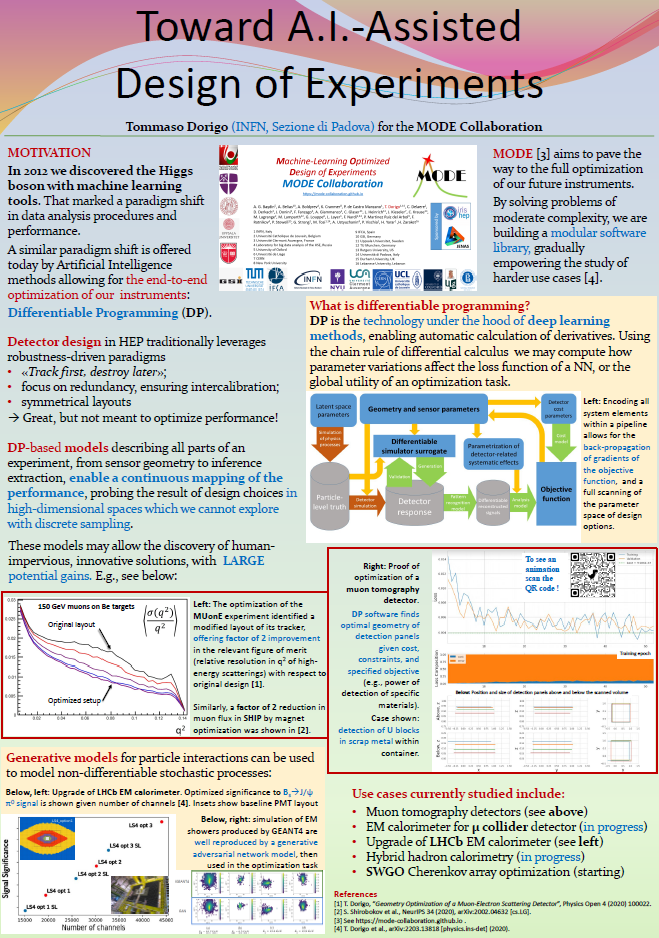Recently I was in the Elba island (a wonderful place) for a conference on advanced detectors for fundamental physics, and I presented a poster there on the topic of artificial-intelligence-assistend design of instruments for fundamental physics. Below is the poster (I hope it's readable in this compressed version - if you really want a better pic just ask).

After the conference, like all other poster presenters I was invited to produce a _two_ page article summarizing it. As I started to put it together, I found out that the fixed template they had distributed left very small room for text and figures - I found it impossible to fit in those two pages even a very short discussion. I took draconian cuts and removed all references, leaving a couple as footnotes to save space. The result was the best I could do given the boundary conditions, and I sent it around to colleagues for comments.
One of them, who had also been at the conference, at that point explained to me that the conference organizers had distributed two different templates: one for reviewers, in one-column format and wide spaced text, and one for the final publication, in two column format and much narrower fonts and spacing. The two-page limit only applied to the latter... Doh. Talk about not reading the fine print of the instruction document :-/
I will have to fully rewrite the document, of course, as in two-column format the text I provided tidily fits in less than one page! At the end of the day, I did not waste my time though: the very condensed text I came up with is in fact more clear than my usual articles. In fact, I think it qualifies to be shown here. So please find it below - a very succinct description of what awaits us in detector design!





Comments